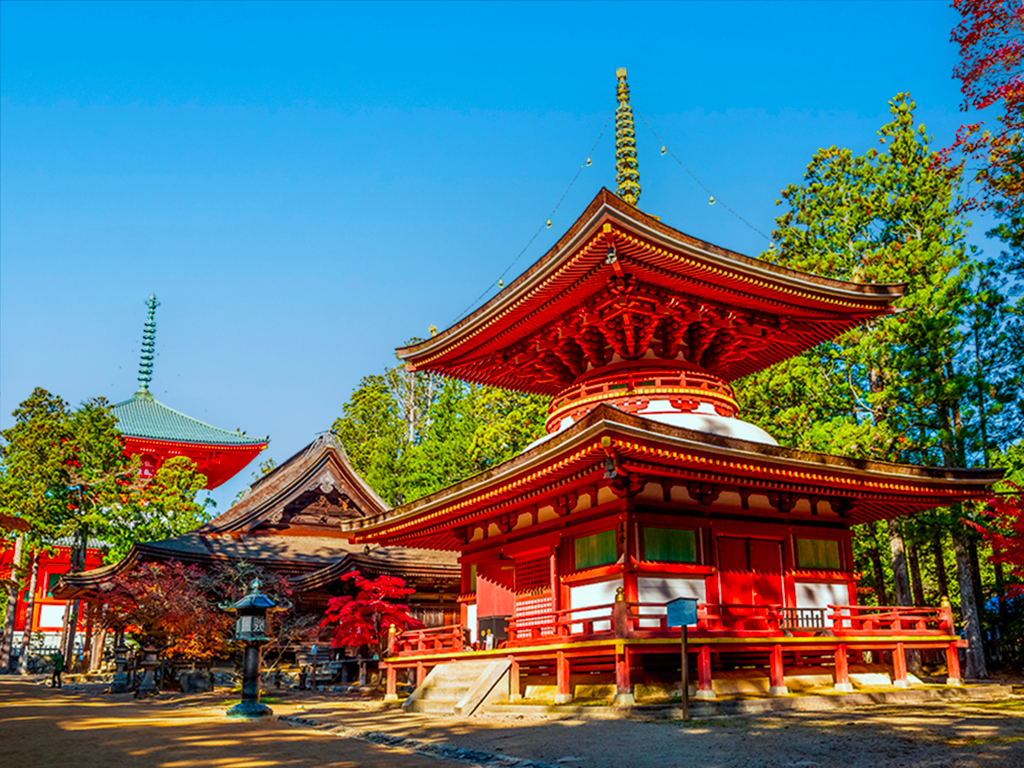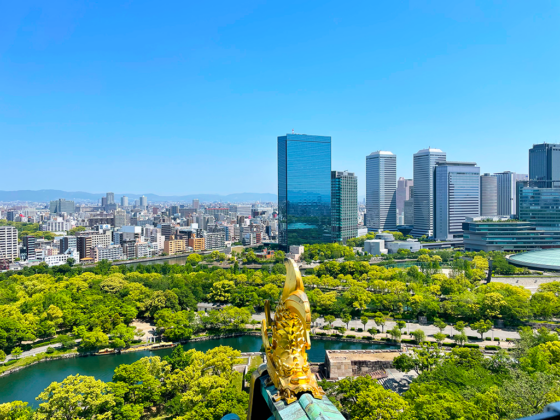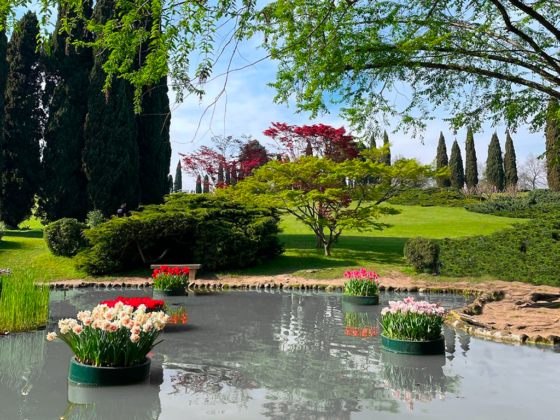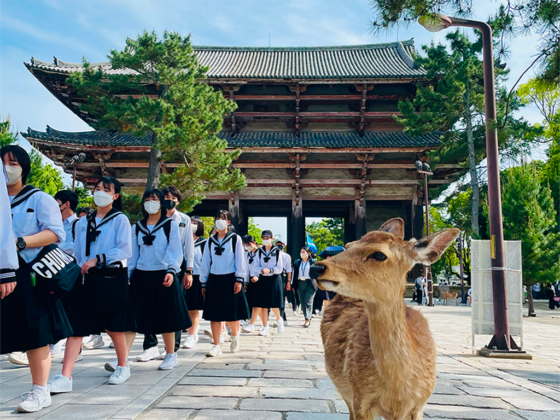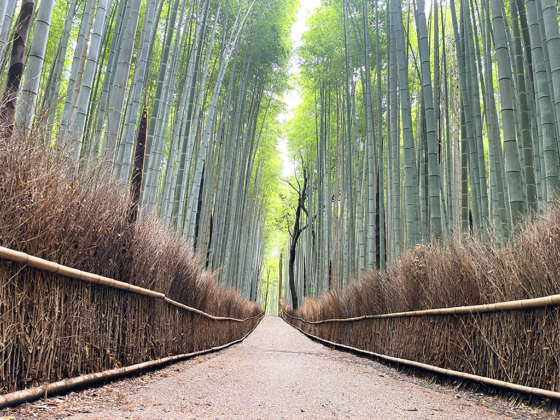Located in the mountains of Wakayama Prefecture, Mount Koya is the centre of Shingon Buddhism and home to over 100 temples and monasteries. Here one can walk paths winding through forests of ancient trees and ancient tombs, breathing in an atmosphere that impresses every type of traveller.
A hike to Mount Koya, is a journey into the spiritual heart of Japan… you don’t expect it, but it is a profound experience.
In order not to miss anything of this incredible place, it is best to plan your day in detail. Here is an itinerary to discover the wonders of Koyasan: it will be a day to remember
How to get there
Mount Koya is easily reached from Osaka, starting from Namba or Shin-Imamiya stations, taking the Nankai Koya Line to the terminus at Gokurakubashi. Limited Express trains (every 1-3 hours) take you directly to Gokurakubashi in about 80 minutes. Alternatively, there are Express or Rapid Express trains (every 20-30 minutes) which require a transfer to Hashimoto Station and take about 100 minutes.
Once you arrive in Gokurakubashi, you need to take the funicular up the mountain to Koyasan Station, the ride takes about five minutes. From Koyasan Station, it is necessary to take a bus in about ten minutes to the Senjuinbashi stop in the city centre.
If you have enough time, you can walk the Fudouzaka that leads to the top of the holy mountain (you can ask for a map of the hike at the railway station office, a map in Japanese only). The path is uphill and 2.5 km long, apparently not too well maintained but easy to follow. Here is a map found online.
Getting around in Koyasan
The temples of Koyasan form a small town on top of the mountain but being flat, many of its attractions are within easy walking distance. Most places of interest, such as the Garan, Kongobuji and the Reihokan Museum, are located in the centre, a short walk from the Senjuinbashi intersection. Only Okunoin is located outside the centre, at the eastern end. At the western end is the traditional entry point, the Daimon Gate.
Three bus lines can be used to get around: the main line connects Koyasan Station with Okunoin, a second line connects Koyasan Station with Daimon Gate, and a third line connects Daimon Gate with Okunoin. All these lines pass through the Senjuinbashi junction, where the Koyasan Tourist Information Centre is located.
Several passes are available:
- Combined ticket: allows entry to several attractions (including the Kongobuji, the Kondo Hall, the Daito Pagoda at Garan, the Reihokan Museum and the Tokugawa Mausoleum) and allows you to participate in a jukai ceremony at the Daishi Kyokai (a kind of Buddhist initiation ceremony). It can be purchased at tourist offices in Koyasan and used for several days.
- Koyasan World Heritage Ticket (valid for two consecutive days): available at the Nankai Namba, Shin-Imamiya and Tengachaya stations, it includes a round trip from Osaka to Koyasan, unlimited bus travel within the city and discounted admission to Kongobuji, the Reihokan Museum and the Kondo Hall and Daito Pagoda at Garan. It is valid for two consecutive days.
- Kansai Railway Pass (usable on non-consecutive days): can be convenient for visiting different places in the Kansai region, or if you stay in Koyasan for more than two days.
- 1-Day Bus Pass: allows unlimited use of buses in Koyasan for one calendar day. It can be purchased at the upper station of the Koyasan funicular.
Detailed itinerary
7:21 – 8:58 Transport from Osaka
We wake up early, very early. We leave Osaka and after a train, a funicular and a bus we find ourselves in the centre of one of the most spiritual places in Japan. You can feel it.
Tips for Trips: the journey is very pleasant because from Hashimoto to Gagurakubashi the line is one-way because there is only room for one track. As the train slowly climbs up the mountain, it offers a beautiful view of the valley, with pretty little railway stations and trees surrounding the carriages all around.
We start the route from the main place of interest.
9:30 – Okuno-in Cemetery
The Okunoin cemetery, considered one of the holiest places in Japan, houses the mausoleum of Kobo Daishi, the founder of Koyasan and Shingon Buddhism.
There are two routes to reach it. The first, the one we followed, starts from the Inci-no-hashi bridge and runs for two kilometres through the cedar forest. The second involves taking the bus to the Oku-no-in-mae stop and following the Naka-no-hashi route to the mausoleum, saving about 1 km of walking and passing through the more modern areas of the cemetery.
Once there, we enter the inner courtyard and find ourselves surrounded by towering cedar trees. This ancient cemetery is a place of extraordinary beauty: the dense trees make shade, but the rays of sunlight that manage to pass through illuminate the ancient moss-covered monuments, the effect is truly moving.
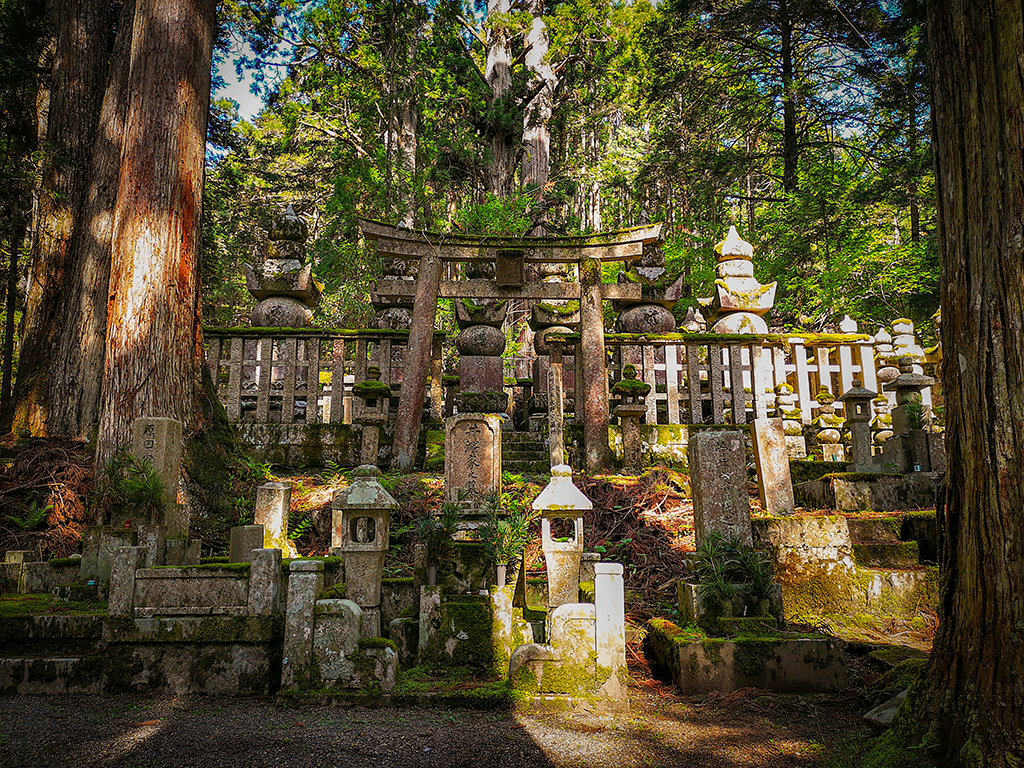
Tips for Trips: The Okuno-in trail stretches about 2 km through the cemetery and is beautifully lit by lanterns after sunset. If you stay overnight, it is worth visiting Okuno-in both during the day and at night, when the lights create an even more atmospheric atmosphere.
The number of stupas and religious monuments hidden in this forest is astonishing; the number of mounds is estimated at over 200,000. Along the way, one also encounters many gorinthes, five-tiered stupas representing the five elements of Shingon Buddhism: earth, water, fire, wind and space.
Another interesting feature are the statues wearing red bibles, the only splash of colour in an otherwise green and grey cemetery. The bibles are placed on the statues by people who have lost children, as a prayer to Ojizo-Sama, the protector of children, asking for his help in getting the souls of their children across the mythical Sanzu River.
Some of the most famous points of interest within the cemetery include:
- Kakuban-Zaka Staircase: This staircase of 43 stone steps is associated with a legend: if you trip and fall while walking down it, you will die in the next three years.
- Miroku-Ishi Sin Stone: Try lifting this stone, which is said to be light for virtuous people and heavy for sinners. The stone is kept in a small hut and you can line up to try to lift it.
- Mizumuke Jizo Statues: Before crossing the bridge to the most sacred part of Okuno-in, you will pass a series of bronze statues depicting the bodhisattva Jizo known for helping beings in the realms of the dead. Pouring water over the statues, Jizo will take care of you as you proceed towards the mausoleum.
- Sugatami-No-Ido Reflection Well: Looking down into this well is a little unsettling. It is said that if you see your reflection clearly, you still have a long life ahead of you; if you don’t, your days are numbered.
- Gobyo-Bashi Bridge: The last bridge on the Okunoin route before entering the sacred grounds containing Kobo Daishi’s mausoleum. The bridge itself is composed of 36 stone tiles that, together with the bridge itself, represent the 37 gods of the Diamond Kingdom. It is customary to bow when crossing this bridge, and photography is prohibited beyond this point.
- Gobyo – Mausoleum of Kobo Daishi: When crossing the Gobyo-Bashi bridge, you can see Kobo Daishi’s mausoleum in the distance, where he is believed to still meditate. Below the bridge flows the Tamagawa River.
- Toro-Do main hall of prayer: TheToro-Do hall is the main hall of Okunoin, built in front of the mausoleum itself. It is said to contain more than 10,000 lanterns donated to the temple by the followers of Kobo Dashi. The monks make sure the lanterns are always lit. Walking through this magnificent hall lit by golden light is a truly special experience.
11:00 – Kongo Sanmai-In Temple
The Kongo Sanmai-in Temple is one of the most unique in Koyasan because it still retains its original form. Being far from the other temples, it escaped most of the fires that destroyed many buildings in Koyasan.
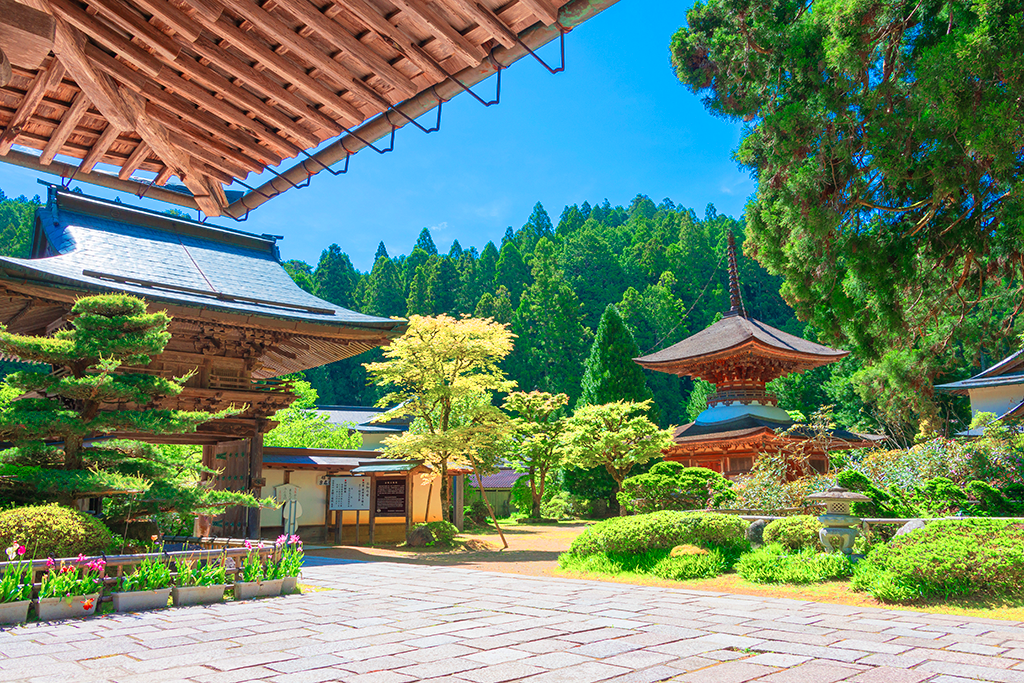
Built in 1211 by Hojo Masako in honour of her late husband Minamoto no Yoritomo, the temple was financed by the powerful Ashikaga and Atachi samurai families, becoming one of the largest in Koyasan. For a period, the Kongō Sanmai-in was dedicated to teaching various aspects of Buddhism, such as Zen Buddhism and Esoteric Buddhism. Many of its buildings, due to their age and history, are considered important national cultural properties and the pagoda is classified as a National Treasure.
Tips for Trips: The Kongō Sanmai-in is one of the temples in Koyasan that allows overnight stays. The facilities are simple, with shared bathrooms and paper-thin walls separating guest rooms, but giving up a few amenities might be worth it for the experience of staying in one of Koyasan’s oldest temples.
12:00 – Mausoleum of the Tokugawa Clan
The Tokugawa Clan Mausoleum was built in 1649 by the third Tokugawa Shogun, Iemitsu (1604-1651), to honour his father, Hidetada, and grandfather, Ieyasu. The mausoleum consists of two identical buildings, one for each of the two ancestors. The building style is typical of the early Edo period, full of extravagant details and ornaments. Each building took the builders twenty years to complete.
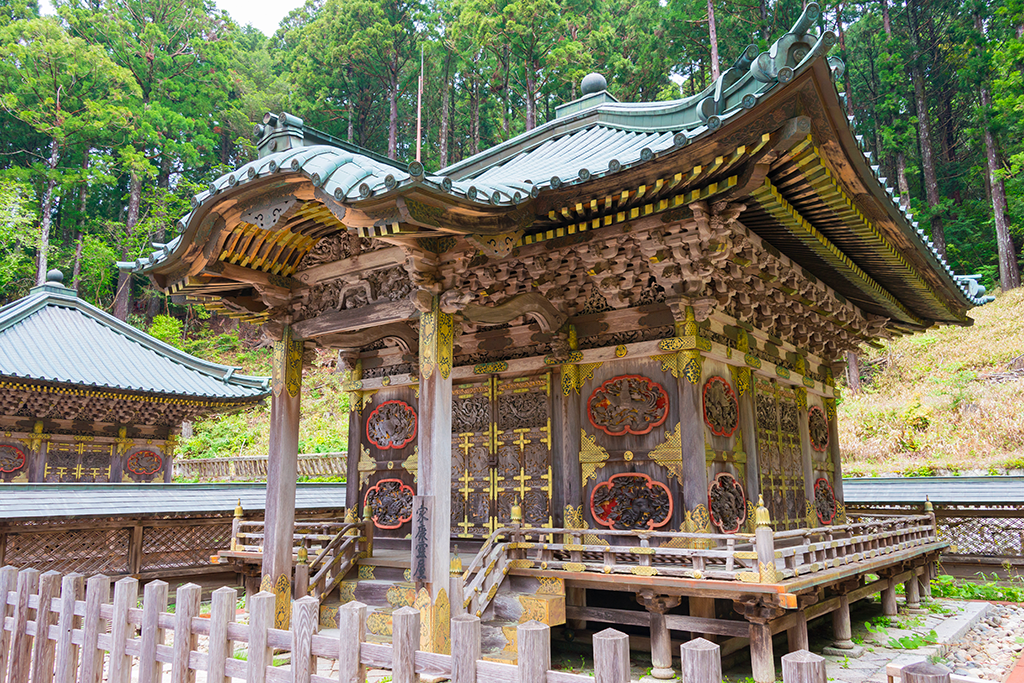
13:00 – Kongobu-Ji Temple
Originally called Daidenbo-in, the Kongobu-ji Temple was built in 1139 with the permission of the emperor. It has undergone many reconstructions over the centuries. The best known is that of 1593, when Toyotomi Hideyoshi asked the monk Ogo to build a temple in memory of his mother, known as Seigan-ji Temple.
After a major reconstruction in 1861, the temple was renamed Kongobu-ji and merged with the nearby Kozan-ji temple as an administrative centre. Today, Kongobu-ji is the main temple of Shingon Buddhism, overseeing more than 3000 temples throughout Japan. It is one of the main attractions in Koyasan, famous for its beautiful illustrated sliding doors and the Banryutei Rock Garden, the largest in Japan. When the garden was built in 1984, the largest rocks from Kobo Daishi’s birthplace were collected. It is fascinating to see the symmetrical circles in the gravel around each rock.
Inside, one follows a walking path through the temple house. This leads past the Ohiroma hall, used for religious ceremonies and important occasions. The sliding doors here are illustrated with crane motifs painted by the artist Kano Tanyu. The route also passes through several ancient and modern halls. The Willow Room, where Japanese daimyō Toyotomi Hidetsugu committed Seppuku, the ritual suicide. Next is the Jodannoma Audience Hall, used to receive guests. The walking tour ends in the temple kitchen with its huge cooker big enough to feed a few thousand monks. The oldest part of the temple (dating back to 1593) is the large dark wooden gateway just outside.
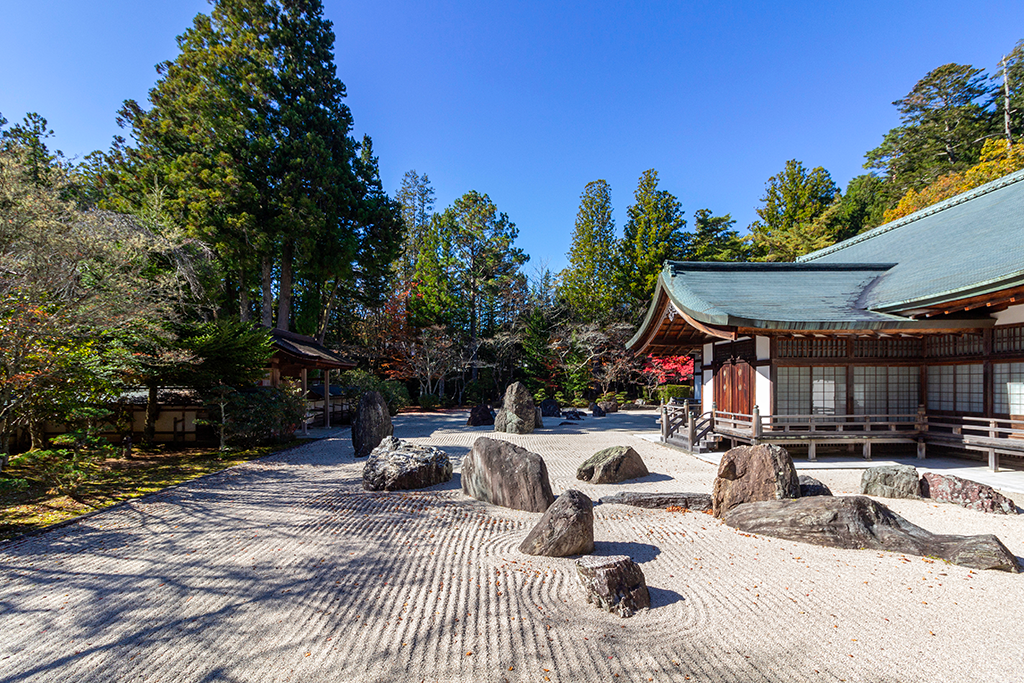
14:30 – Koyasan Reihokan Museum
Founded in 1929, the Koyasan Reihokan Museum exhibits statues and works of art belonging to the Kongobuji Temple. The collection comprises over 78,000 objects, including National Treasures and Important Cultural Properties. The exhibition changes frequently, making it one of the most significant museums in Japan.
15:00 – Danjo Garan (Centre for Teachings of Shingon Buddhism)
Garan, or Danjo Garan, founded by Kobo Daishi in 835, was the original centre for the teaching of Shingon Buddhism. It consists of eight main buildings, including temples and pagodas. The most important ones to see are listed below.
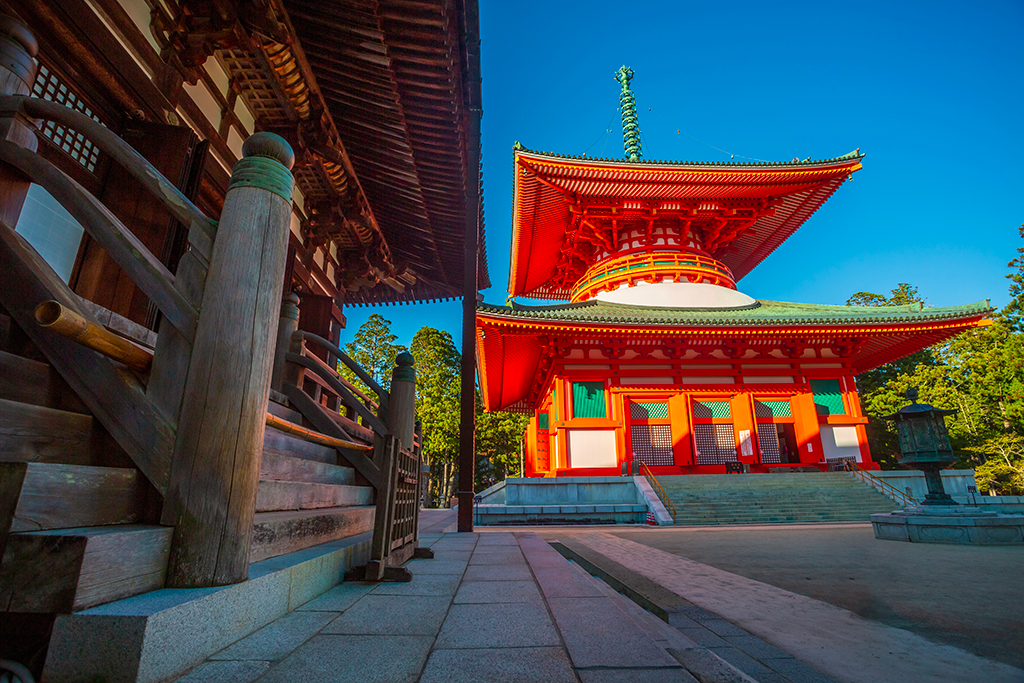
Chumon Gate
The big red Chumon, meaning ‘central gate’, is the entrance to the Danjo Garan complex. The original gate was a Tori gate built at the time of Koyasan’s foundation in 835. The gate has burnt down several times since then and the design has evolved into a two-tier gate with five compartments.
After the gate burnt down in 1843, it took 172 years to be rebuilt. The current gate was built in 2015 to celebrate Koyasan’s 1200th anniversary, inspired by the design of the Kamakura period (1192-1333) and using traditional construction techniques (no nails) and little-used materials (local cypress and cedar). As a central gate, it functions as a second line of defence against evil spirits, protecting the sacred temples and Buddha’s teaching from evil and temptation.
Konpon Daito Pagoda
The tallest building in Koyasan is the 49 metre high Konpon Daito, also known as the Great Pagoda, which is the centrepiece of Garan and one of Koyasan’s most recognisable landmarks. The original pagoda has long since disappeared, and there have been at least six reconstructions since then. The current pagoda was built in 1973 and is a faithful reconstruction of the original, except that due to numerous forest fires, it is built of concrete and not wood.
The name Konpon means ‘fundamental’, and the pagoda was supposed to be a fundamental and essential part of the teaching of esoteric Buddhism. The architecture is different from other pagodas of the time, with a square lower floor and a round upper base. Konpon Daito is believed to have been the first to use this style that later became popular in Japan.
Inside the pagoda, the centre piece is the statue of Buddha Mahavairochana, surrounded by the other four monks of the Kongokai, the spiritual realm also known as the Diamond Kingdom. This is a central part of esoteric Buddhism.
Kondo – The Golden Room
Kondo, also known as the Golden Hall, was the first hall in Japan dedicated exclusively to Buddhism. The current hall is the eighth restoration of the original after many fires and was built in 1934. It was designed by the father of modern Japanese architecture, Takeda Goichi, who decided to use concrete to make the building fire-resistant. The name Kondo means “auditorium”, and the hall is used as a meeting place for monks at important announcements and meetings.
16:15 – Daimon Gate
The main gate of Koyasan, or Daimon Gate, is a large two-storey red gate 25 metres high, marking the traditional entrance to Koyasan from the west. The current gate was rebuilt in 1705. As we approached, the sight of the figures of the two gatekeepers, the Kongorikishi, was chilling. We also crossed the road from the gate, where there is a good view of the valley below.
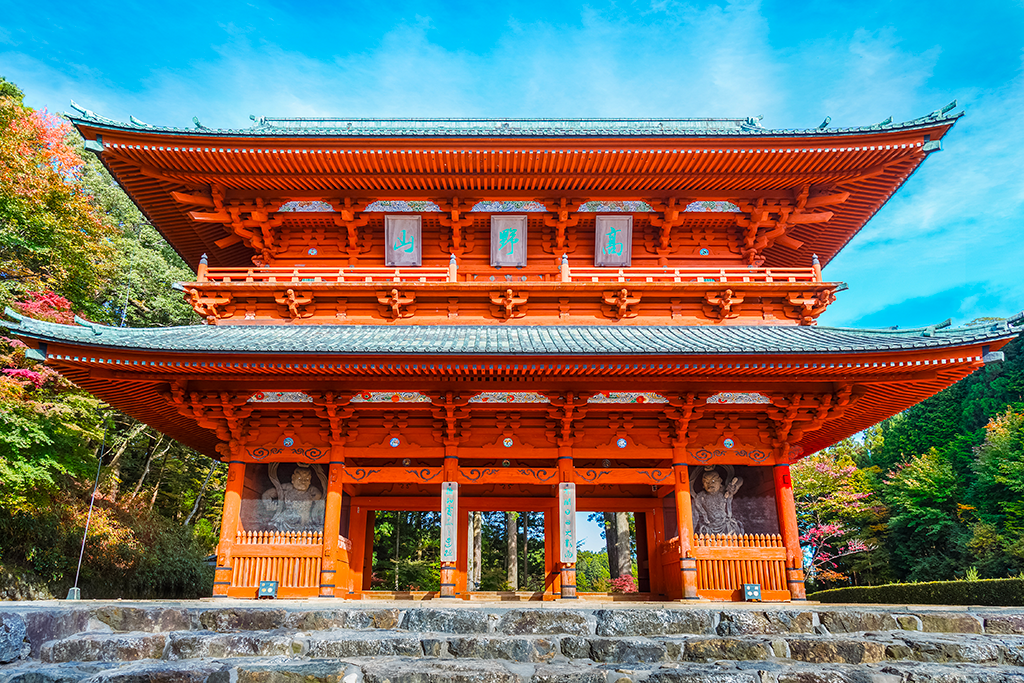
17:07 – Return to Osaka
We retrace the same route back to Osaka, tired but happy to have visited the spiritual centre of Japan. The day in Koyasan was full of natural beauty and historical discoveries. Mount Koya, with its temples and breathtaking scenery, enchanted us.
Last modified: 13 June 2025
